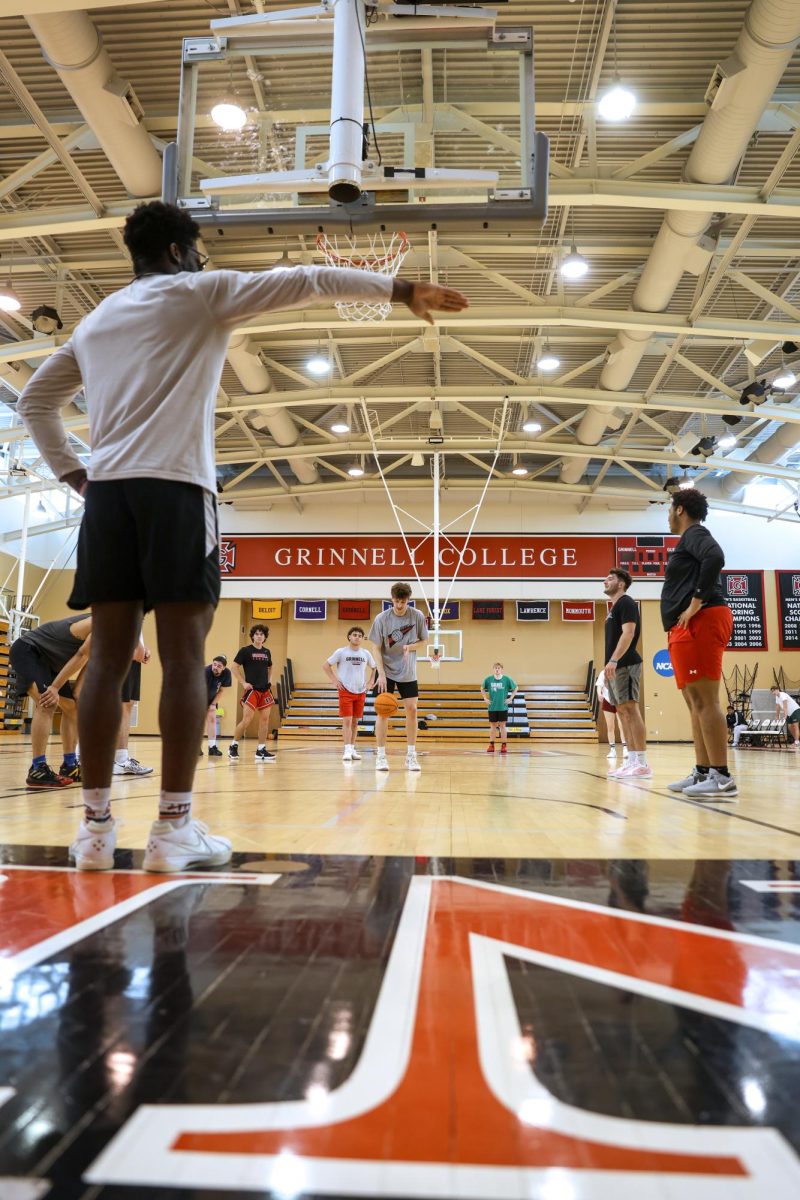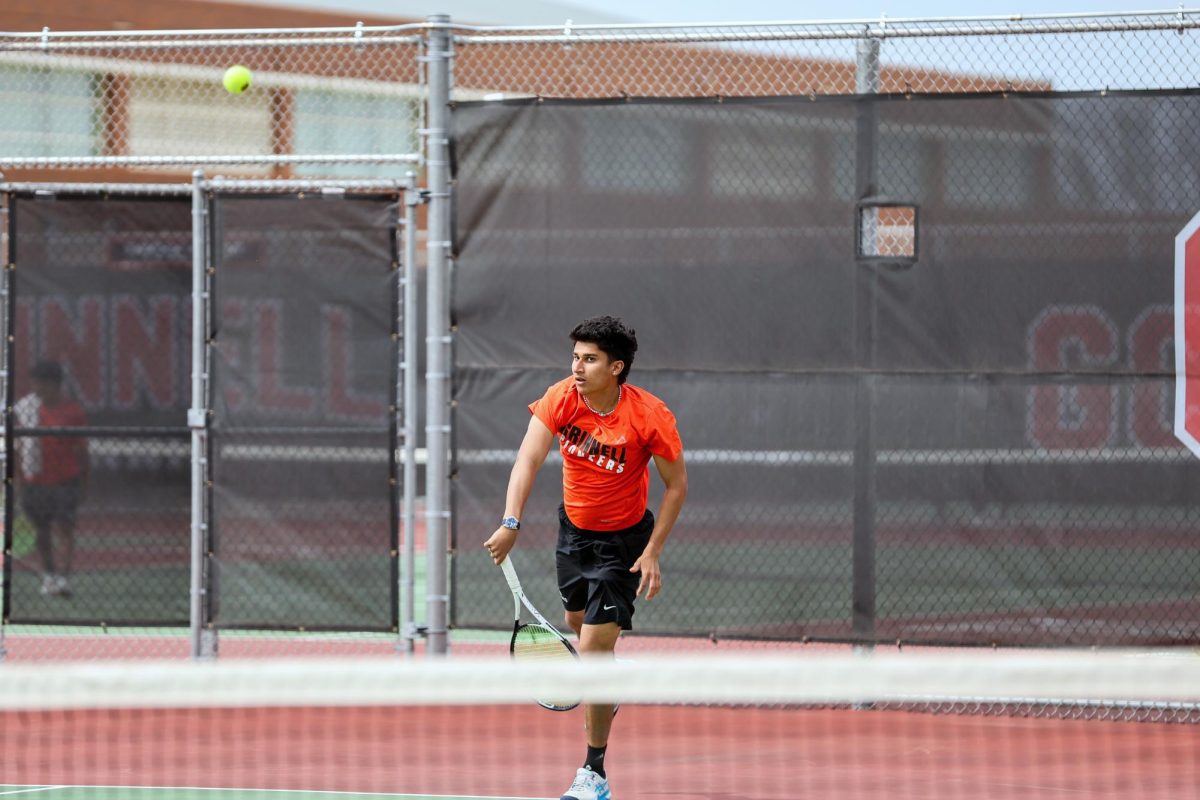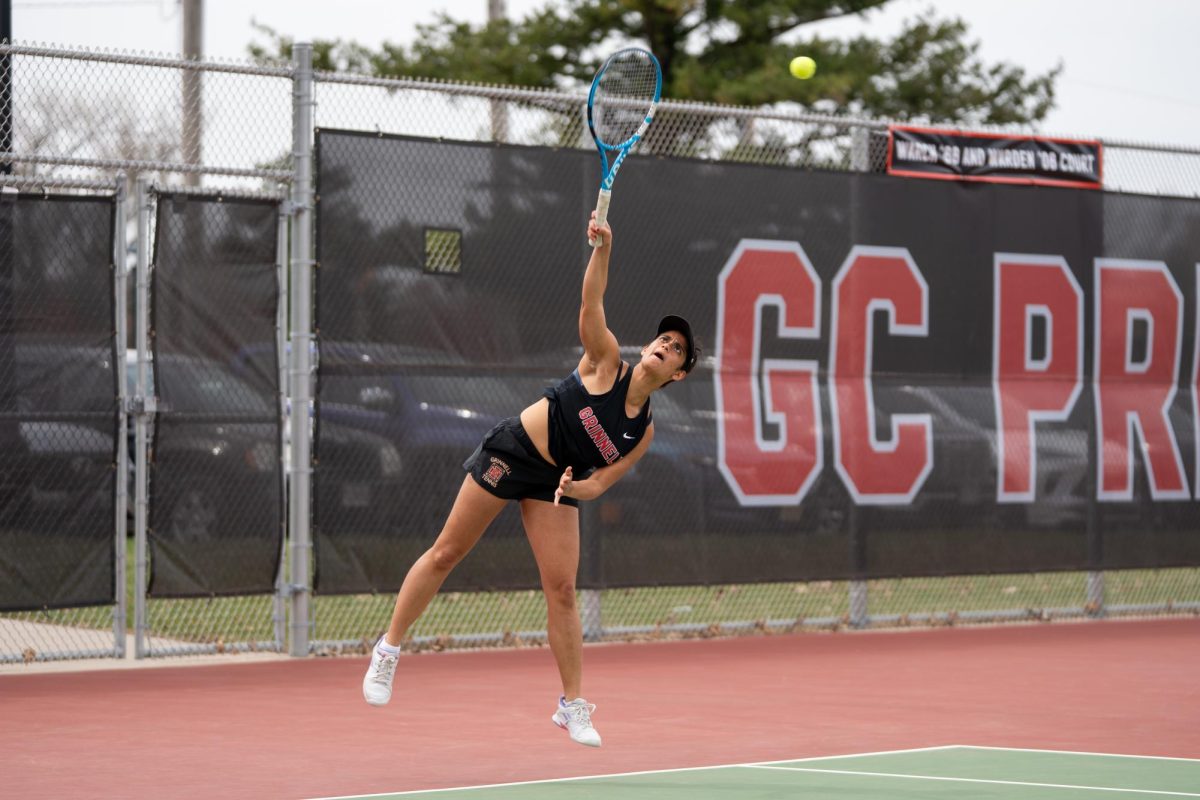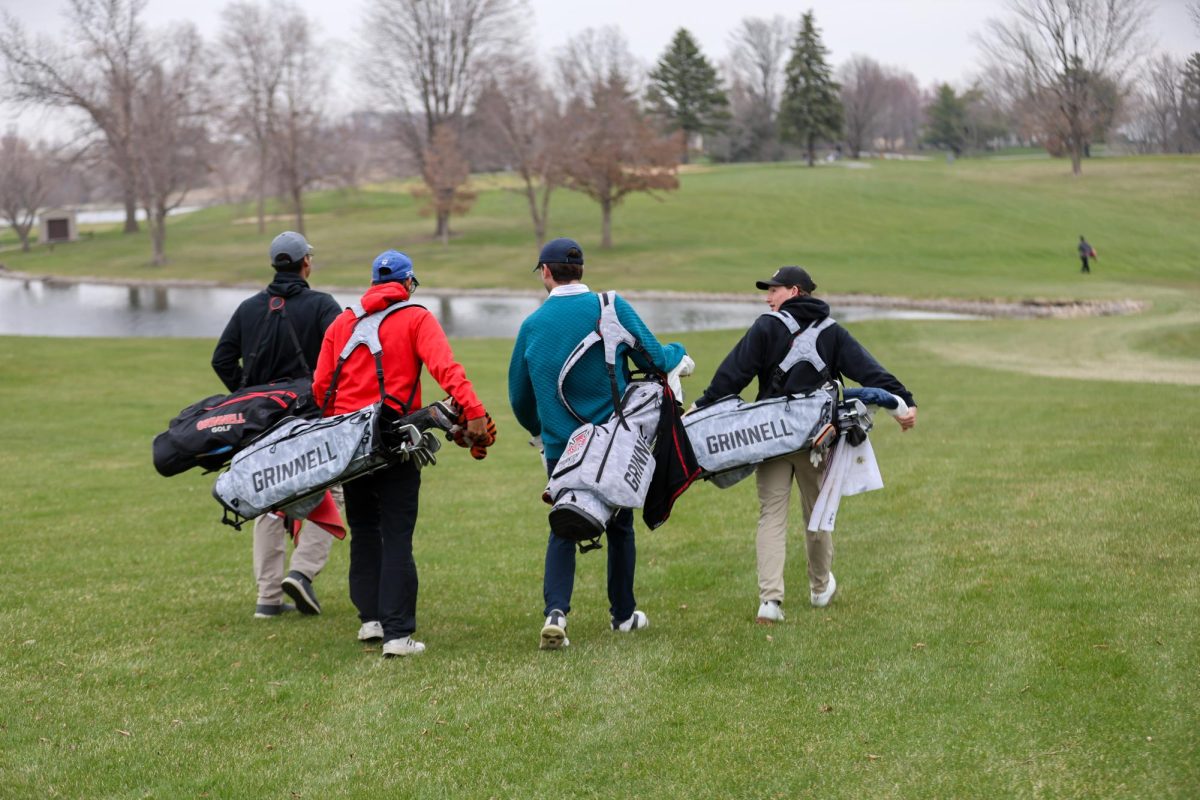Injury for athletes poses challenges on and off the court, and at an academically rigorous institution like Grinnell College, an injury can have big consequences on academic performance.
Kai Te Huki `27, who fractured his metatarsal when descending his dorm room stairs, said that hours spent in doctor’s offices kept him from crucial classes, and the difficulty of getting from place to place on a scooter limited his attendance at office hours.
“I was reluctant to reach out for help,” Te Huki said. “I didn’t really know the accommodations available to me or that I could have used. So, yeah, I think that’s something that I didn’t explore that much.”
Te Huki did reach out to the Department of Residence Life and was able to transfer from his third floor dorm in Dibble Hall — an elevator-less dorm — to a dorm room with elevator access.

(Chhayachhay Chhom)
Rohan Thota `28, a pole vaulter for the track and field team, broke his arm and tore his ACL and lateral meniscus while pole vaulting at a meet early this spring.
“It was a good day. I just hit PR [personal record] and made top five, so I was really excited,” Thota said. “I just didn’t really listen to my body telling me I was tired. So on my last run, I didn’t bring enough speed into it. Instead of taking me through and landing on the foam pit … [I] fell back and just landed on my knee.”
Thota was initially bound to a wheelchair and unable to wheel himself around with his arm in a cast, so he relied on his friends to help him navigate campus. Fortunately, after three days, Thota was able to return to walking until his leg surgery. Thota is now on crutches and in a brace.
“Luckily, I guess my arm healed up right when I did get surgery, because then I could start using crutches again,” Thota said. “You don’t really think about it, but using crutches with only one leg, it’s very tiring.”

Contributed by Rohan Thota.
For Thota, the most difficult parts of campus to navigate have been the dining hall and Robert N. Noyce `49 Science Center. In the dining hall, Thota relies on friends, and occasionally dining hall staff, to help get his food. In Noyce, Thota has only been able to find and use one elevator that reportedly runs slowly given the high traffic.
To help ease his recovery, Thota reached out to Residence Life, who transferred him to emergency housing — one of two single dorms in Norris Hall — before his surgery.
Like Te Huki, Thota also fell behind in his classes due to doctor’s appointments and an increased need for self care. To help lessen the burden, Thota reached out to his professors, who told him to focus on his health and that the rest would work itself out.
Though they may be at a higher risk, injury is not unique to athletes. In November of 2024, Sanaa Shah `28 broke her ankle skating at Roller Skate Harris. A complete fracture of her fibula bone left Shah boot-bound and scooter-dependent for the rest of the semester. For her, one of the most challenging parts of recovery was getting across campus.
“I feel like, just the pure energy it took from me,” Shah said. “You would assume that getting around in a scooter would be much easier than walking, but it’s not the case. For me personally, it might have been the way that I was doing it, but it took a lot of energy, and it takes time too.”
Shah had the additional challenge of traversing campus in winter weather conditions when sidewalks were slick with ice or made rugged by the chunks of ice-preventative salt. Shah said that not only did the boot not have traction, but she was only allowed to wear one other shoe — one with limited traction.
Until finals week, Shah was bound to the scooter, and her injured foot was not able to bear any weight. Fortunately, Shah had little ground to cover on her own, as her parents flew in to help her through the recovery process. Between the injury and the end of the fall semester, Shah lived off-campus with one of her parents, who would drop her off and pick her up from school everyday.
For academic support, Shah turned to Academic Advising, who helped her plan and manage her time as she played catch-up. Shah also kept up communication with her professors through this time.
“Keeping a good line of communication with them was extremely, extremely helpful, especially after coming back,” Shah said. “You kind of needed to let them know, like ‘Hey, I have a lot on my plate. This is what I can do. I’m gonna complete it all, but there’s gonna be a delay’ … My experience is different from other people’s experiences, but I’d say asking fellow students to help me out a bit and asking my professors too, has a huge role [in recovery].”
Thota and Te Huki reiterated the impact of asking for help and the importance of staying engaged and involved in any way they can in their recovery.
“I think the worst thing you could do when you’re injured is staying in your dorm,” Thota said. “I think it’s not really going to help at all, and it’s probably going to make things worse.”
Shah also highlighted the need for empathy during recovery, without condescension.
“As people in general, you’re not able to understand something unless you experience it for yourself,” Shah said. “You don’t also need to pity us. Yeah, we do things more slowly. And we don’t do things as fast as you can, especially like when we’re trying to recover. But we’re at the same level.”







